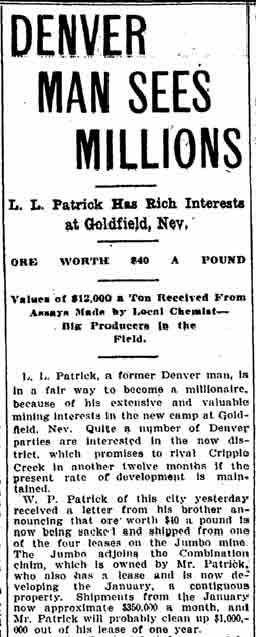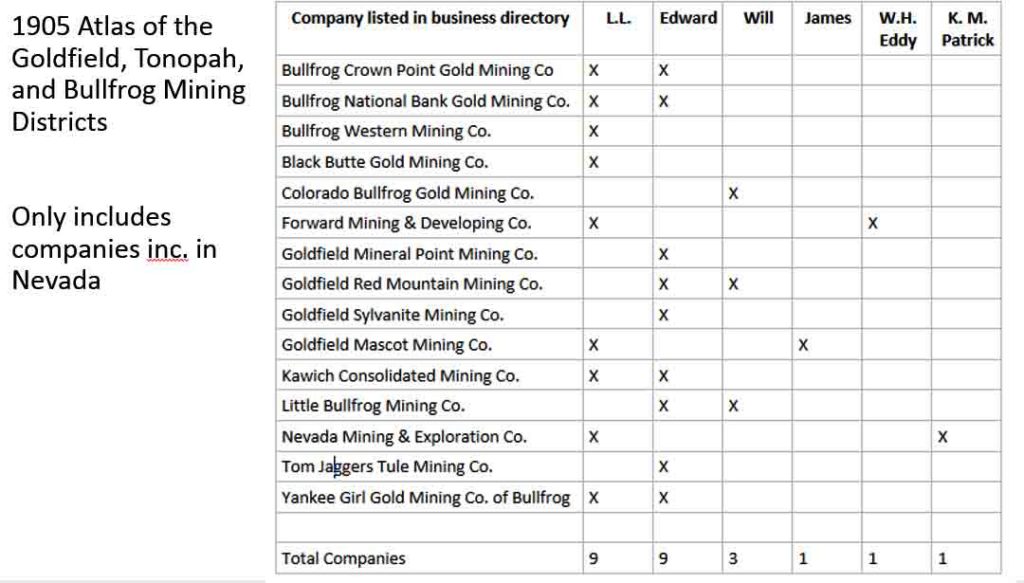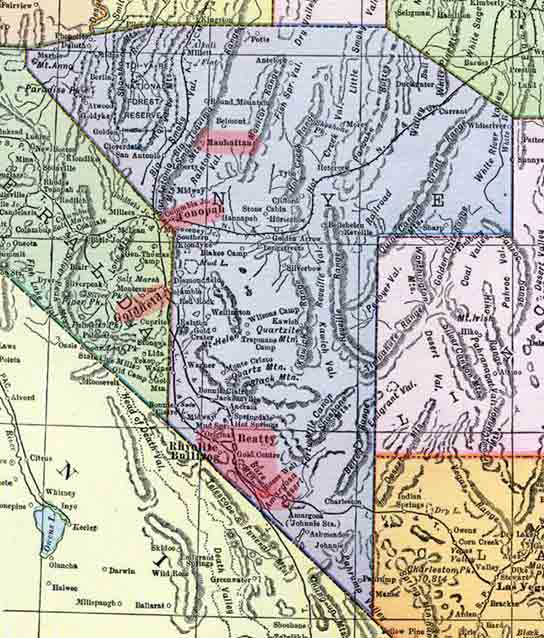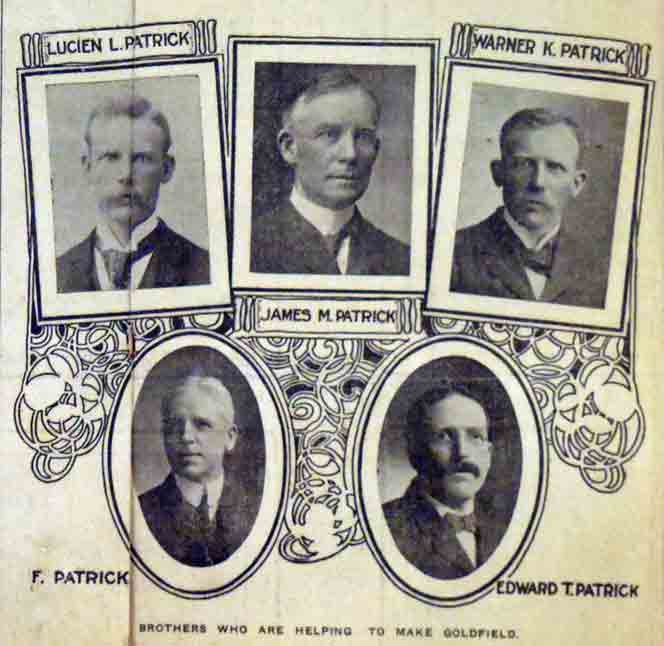1890s
Will sold his interest in the Col. Sellers in 1895 to his mother Eliza, probably to finance his investment in the Southern Eureka Mine in the Tintic District in Utah. However that investment didn’t not pan out and in 1901, Will filed for bankruptcy and discharged almost $70,000 in debt.
Around 1890 or so, Lucien took off for the Pacific Northwest. Starting in 1892, he is listed under Mining Engineers in Seattle city directories.
He remained in the northwest for the next ten years. He and a partner leased some claims from the Golconda Company on Troublesome Creek above Index, WA but those came to nothing.
Then he was superintendent of the Montezuma Mine in the Slocan district of British Columbia. But while the mine seems to have continued producing for the next ten years, the companies operating it never survived very long.
By mid-1902, Lucien was in Idaho at Thunder Mountain inspecting mines for a New York consortium.
NEVADA
While Will had brought his family to Colorado, it was Lucien who led them to Nevada.
Lucien was the first to be intrigued by the news coming out of Tonapah, Nevada. He left Idaho at the end of October 1902 to see what all the commotion was about. He soon asked Will to join him. He also decided he wanted to be called “L. L.” which Mrs. Hugh Brown was later to find amusing.
I haven’t found out what their first mines were, but they seem to have quickly made names for themselves in Tonapah. This early time was eclipsed when Lucien decided to see what was going on 25 miles to the south in 1903 in Grandpa.
By August 1903, L. L. had taken an option on a group of claims called the Combination #1. I haven’t found the exact timing of the option but Lucien was given some time to come up with $5,000. His moneymen were Chicago merchants and the $5,000 was slow in coming, so Lucien approached George Wingfield and George Nixon as possibly putting up the money. But the Chicago merchants came through and on October 26, the bond to purchase the Combination was signed.
Here is the schedule of bond payments.

The Combination legend has it that no other cash was required, that the mine paid for itself. The first ore shipment was in late November and may or may not have come in time for first bond payment. But the other payments were met with royalties from the mine.
In April, the Combination Mill started operation and continued until Sept. 15, 1909.
Despite the failure of the Lake County Sampling Works 25 years earlier, the Patrick brothers loved to build mills. The mill at the Col. Sellers was designed and built by David Bruton, so maybe Will learned how to build mills better. The first thing the Galena Milling and Mining Company did in Rico was build a mill. And this was to continue through all the Nevada districts where the brothers worked.
The Combination was sold to the Goldfield Consolidated Mines Company in 1907 for over $4 million dollars.

L. and four partners leased the January mine in January 1904. The lease was for one year. Through November the January returned over $310,000. The lease ended in January 1905. So for 12 months, Lucien had the two top producing mines of Goldfield.
Meanwhile, Will seems to have concentrated on Tonopah mines. Warner and Edward came down as did their brother-in-law, Will Eddy. They all got busy with their ventures and helping each other out.

Here is a list of mining companies the brothers had going in 1905. KMP is Katherin, LL’s wife. She is also listed on a couple other mining companies through the Nevada years. James is listed only once, but he was very much involved. The brothers formed several mining investment businesses among them were the Patrick Investment Company and the Forward Mining Development Company, which James ran from Denver. And which sold stock in all the Nevada companies.

Here are the areas the Patrick brothers mined. Tonopah, Goldfield, Rhyolite and Bullfrog , and then Manhattan up north.
This is a middle section from the Annual Edition The Daily Mining Record, March 1905.

“Among the many little romances, tragedies, humorous incidents, that make of Goldfield a field day for the novelist as well as the miner, there is the story of the Patrick brothers. Two brothers engaged in mining in a camp is common, three delving into the earth for its precious contents in the same locality is not so very unusual, but when five brothers enter a district, engage in mining and make a success of it, it is time for the seekers after the extraordinary to sit up and take notice.”
There is much more, but not enough time.
Will died in Rhyolyte on July 14, 1905. A newspaper article quoted James as saying Will ate cucumbers and combined with the heat, that killed him. In reality it was stomach cancer.
Warner passed away, also in Rhyolyte, but in 1914. I am not sure exactly what he did. Probably working in the mines of his brothers.
James passed away in 1918. He had retired to California.
Edward was appointed Assistant Attorney General for the State of Nevada in 1912. In 1914, he and his wife lived in Beatty, NV for several years. I believe he was still involved in mining. He died in Los Angeles in 1924.
LL continued until 1944. He had several more mining adventures after his brothers passed away.
Ten months before he died at the age of 81, he wrote my grandfather about the history of the family and he ended the letter with: “I have not yet got my Vanadium property, but have some good prospects and think we will be going soon.”
